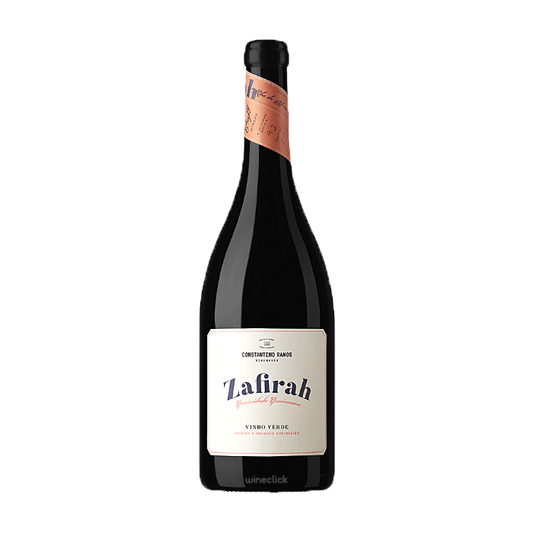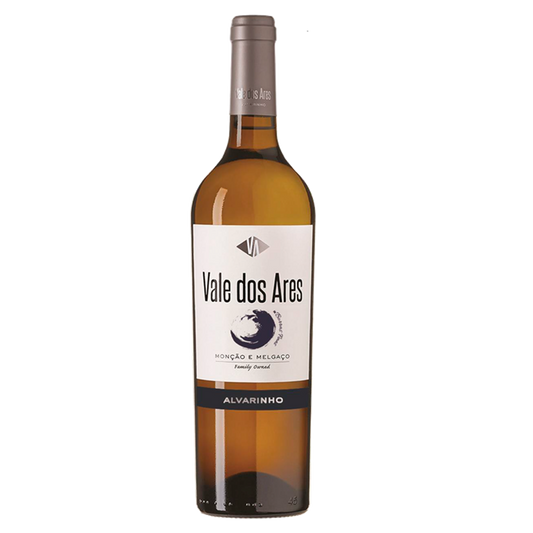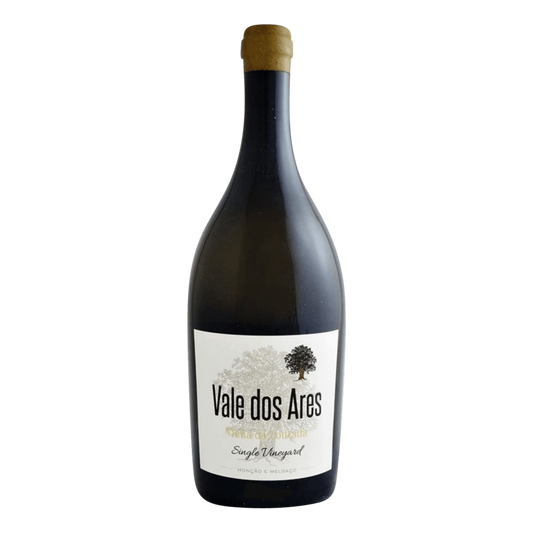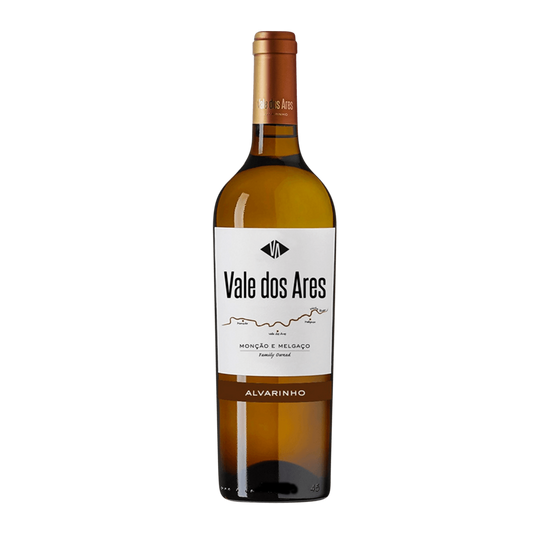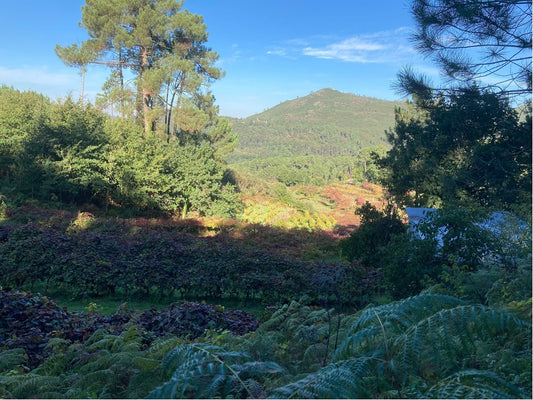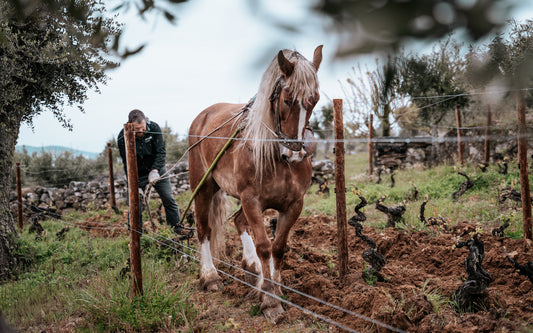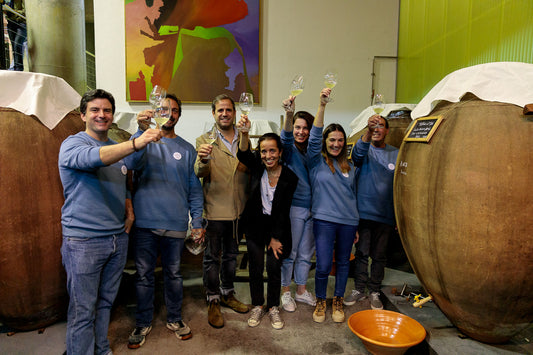If it strikes you as perverse to post a blog about Vinho Verde in winter read on, because Vinho Verde is not just a summer quaffer, nor is it all about white wines. For starters, Vinho Verde is a wine region, not a wine style. And it’s a sizeable one at that, with nine sub-regions, of which the most star-studded is Monção e Melgaço.
Vinho Verde’s hot spot
Here, on the opposite bank of the river Minho from Rias Baixas, the Alvarinho grape (a.k.a. Spain’s Albarino) reigns supreme, making among Portugal’s top white wines. Well-structured and intense, the very best Alvarinhos from Monção e Melgaço age superbly.
I was reminded what makes Monção e Melgaço so special during a visit in November, when I caught up with two of FESTA’s latest finds, Alvarinho specialist Miguel Queimado of Vale dos Ares and Constantino Ramos, who is something of a whizz with red Vinho Verde. Highlighting one of Monção e Melgaço’s key strengths, Constantino pointed out, “my grapes for red wine are fully ripe here at 10.5/11% alcohol.”
Located inland, river valley slopes and mountain foothills protect Monção e Melgaço from the Atlantic’s cool, humid influence, resulting in a warmer, drier microclimate. What’s more, being inland makes for a degree of continental influence, meaning summer days are hotter, but nights are cooler than westerly parts of Vinho Verde, ensuring that grapes ripen, whilst maintaining freshness and balance.
For richer, for poorer
 Miguel Queimado in the family's traditional adega (winery), which he renovated in 2012; photo credit Sarah Ahmed
Miguel Queimado in the family's traditional adega (winery), which he renovated in 2012; photo credit Sarah Ahmed
Vale dos Ares is sourced from Quinta do Mato in Vale dos Ares (meaning valley of the winds), which has been owned by Miguel’s family since the 17th century. The estate’s vineyards rise from 150m to 300m above sea level, as compared with estates near the Minho river at 50m above sea-level. Close to the rivers, in the bottom of the valleys, richer alluvial soils are perfect for explosively aromatic, fruity Alvarinho wines. As you go uphill, poorer soils and cooler conditions produce increasingly refined examples.
“I have one grape, so if I want different styles, I need to individuate; you can do it the winery, but I want to focus on the differences in the vineyard,” said the Agricultural Engineering graduate, who went on to study Viticulture & Oenology. Miguel started re-structuring the vineyard when he took on the family vineyard in 2006; in 2013, he launched Vale dos Ares wines from the cream of the crop (the rest of the grapes are still sold to Monção co-operative).
As we explored his four-strong Alvarinho range, Miguel explained how soil type, elevation and aspect impact on each wine. For Vale dos Ares’ riper, peachy, entry-level Colheita, “I want more sun exposition,” he said, so the grapes are chosen from lower west-facing parcels on more fertile soil.
Grapes for Borras Fines Alvarinho come from better-drained, less fertile soils with a higher proportion of granite, “so you have more phenolics and more bitterness,” observed Miguel. My pick of the bunch, this tangy, textural (lees-aged) cuvée deftly treads the tightrope between fruitiness and bitterness, ripeness and freshness.
For Vale dos Ares Limited Edition label, Miguel mixes it up, sourcing grapes from fertile and more granitic soils to produce more layers of flavour. This powerful cuvée is also influenced by the oak barrels in which it is fermented and matured for several months.
‘The mountain is mine’
 Sheep keep Vinha da Coutada trim at Quinta do Mato, the home of Vale dos Ares Alvarinho; photo credit Sarah Ahmed
Sheep keep Vinha da Coutada trim at Quinta do Mato, the home of Vale dos Ares Alvarinho; photo credit Sarah Ahmed
Vale dos Ares’ top tier Alvarinho - Vinha da Coutada - comes from a higher, single north-west-facing parcel at 250m which, being cooler, tends to a fresher, citrus-driven profile and firm acid-line. Complex trace bitter notes reflect the soil’s high granite ratio, additionally, the traditional single cordon trellis, which results in more fruit shading. Naturally higher in acidity and phenolics, this well-structured Alvarinho spends a year in oak. “It’s mostly sold to Michelin-starred restaurants,” said Miguel, proudly.
Miguel has yet to produce a wine from his youngest vineyard, which perches above the other parcels and adjoining winery. He planted it four years ago, having cleared a patch of woodland on the hillside. Only he and the local deer population have sampled the grapes!
Although the vineyard is west-facing, because it is located at 300m, “I have a freshness because of the elevation and less stress, because the soil is schist [which retains water better than granite].” Aiming to go higher still, “the rest of the mountain is mine,” he exclaimed, clearly relishing the prospect.
Seeing red

Constantino Ramos in the ruins of the old winery at the 70-year-old Zafirah vineyard; photo credit Sarah Ahmed
Miguel is not the only producer chasing the intensity, freshness and minerality that come with altitude and poorer soils. In the Moura Valley to the east of Vale dos Ares, Constantino Ramos makes a beautifully restrained Alvarinho called Afluente, from a vineyard at 200m above sea level. Echoing Miguel, he confirms, “higher up, the soils are poorer and better drained, so the vines must go deep for nutrients and soil....I prefer restrained, mineral styles, so soils where you find granite, feldspar and quartz – a mix of geology.”
Being a prodigy of Alvarinho expert, Anselmo Mendes, for whom he worked for 10 years, you would expect Constantino to be a dab hand with Alvarinho. He has his wife’s family to thank for discovering the place traditionally known as Monção e Melgaço’s best spot for red wines, which were exported to England and Flanders back in the XIV century as an alternative to Burgundy.
“Like everyone,” he said, “my wife’s cousin Xavier had a small vineyard to make wine to drink at home. When I spent two nights there when I was working for Anselmo, he challenged me to do something with the grapes.” In 2016, he made 600 bottles of Zafirah from Xavier’s 70-year-old field blend vineyard (pictured).
Rare nuance & delicacy
The 2016 vintage is long gone, but Constantino showed me a vertical of the 2017, 2018, 2019 and latest 2022 vintage to demonstrate how well Zafirah ages. As the red fruit mellows, becoming subtly softer and sweeter, notes of tertiary spice and forest floor together with sluicing, mineral acidity make for rare nuance and delicacy in a red Vinho Verde. Perhaps because it is not made conventionally.
Unlike Miguel, Constantino did not start out in the wine growing business. Bored of his job in the pharmaceutical industry, he became an enthusiastic student of wine, tasting widely. He told me, “my love of light reds from Beaujolais, the Loire and Galicia informed my approach to making Zafirah,” which he makes like a white wine. Having totally de-stemmed and crushed the grapes, following a 24 hour cold soak, the grapes are pressed; only the must is fermented, then aged for six months, in a combination of stainless steel (2/3) and used French oak (1/3).
The field blend factor
 Traditional trellising at the 70-year-old Zafirah field blend vineyard; photo credit Sarah Ahmed
Traditional trellising at the 70-year-old Zafirah field blend vineyard; photo credit Sarah Ahmed
There is another factor. Most ambitious red Vinho Verdes I’ve tasted are made from the Vinhão grape, which is notoriously high in colour, acidity and tannin. Constantino reckons that Zafirah’s old vines comprise roughly 30% Vinhão, with perhaps another third of Alvarelhão, then a mix of local varieties such as Borraçal, Pedral and Espadeiro. The other varieties (and not just the winemaking process) evidently temper Vinhão’s astringency.
“Now the challenge is to retain some Zafirah for late release,” said Constantino, who took cuttings from Xavier’s vines and extended the vineyard in 2017. The winemaker is also seeking out more small plots and thanks his lucky stars that family connections have helped win the trust of locals. He laughed, “people never wanted red grapes, so they think what is this guy about!?!”
 Constantino Ramos under the shade of Juca Tinto’s centenarian field blend vines; photo credit Max Graham
Constantino Ramos under the shade of Juca Tinto’s centenarian field blend vines; photo credit Max Graham
Focused on west-facing vineyards – “the best for the sun” - Constantino currently works with several parcels, including a centenarian field blend parcel at 400m, which produces Juca Tinto. Heavy rainfall (600mm in October alone!) stopped play, preventing me from visiting this remote parcel in the middle of a forest. Fortunately, Max visited during the summer and, as you can see, it is a rare find. As is the wine which, in contrast to Zafirah, is an inky hue, with violets and bergamot jelly aromats, dark berry fruit and a cloak of fine couverture chocolate tannins.
In 2022, when Constantino focused on his own project full-time, he has additionally made Juca Louriero – a white Vinho Verde from the Lima sub-region. It is an exciting new addition to this talented winemaker’s range. As my visit confirmed, Miguel and Constantino are most definitely names to watch for top notch Vinho Verde.


